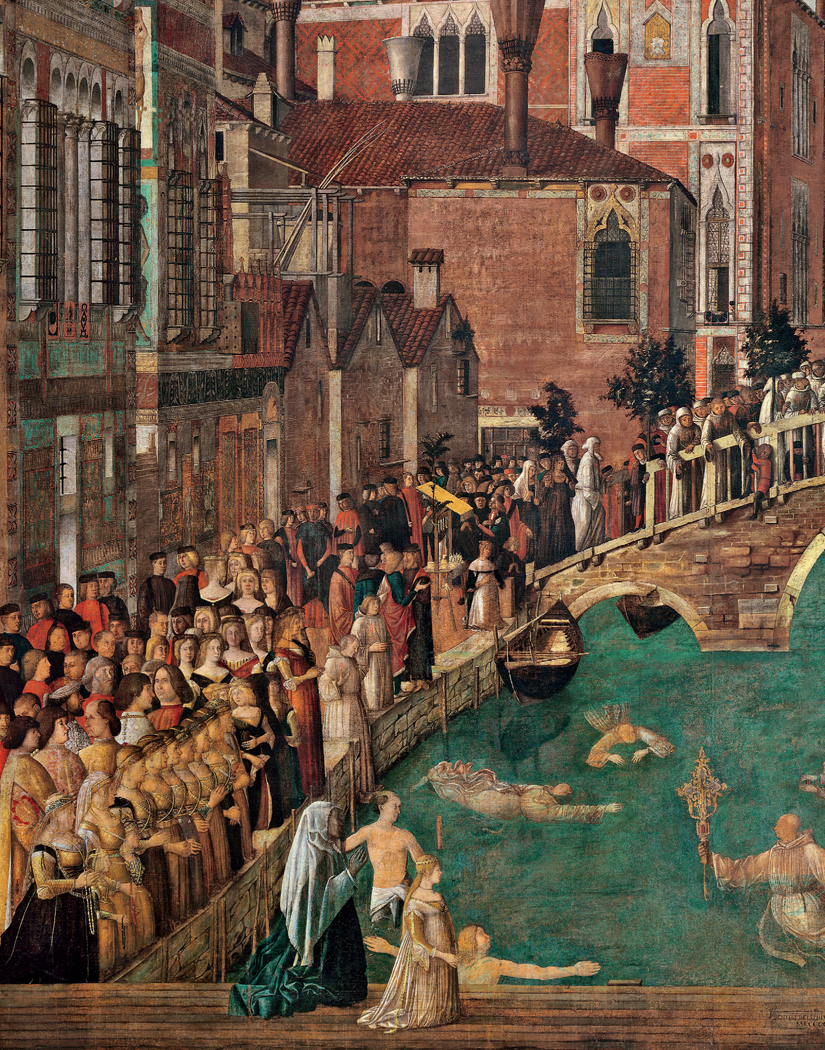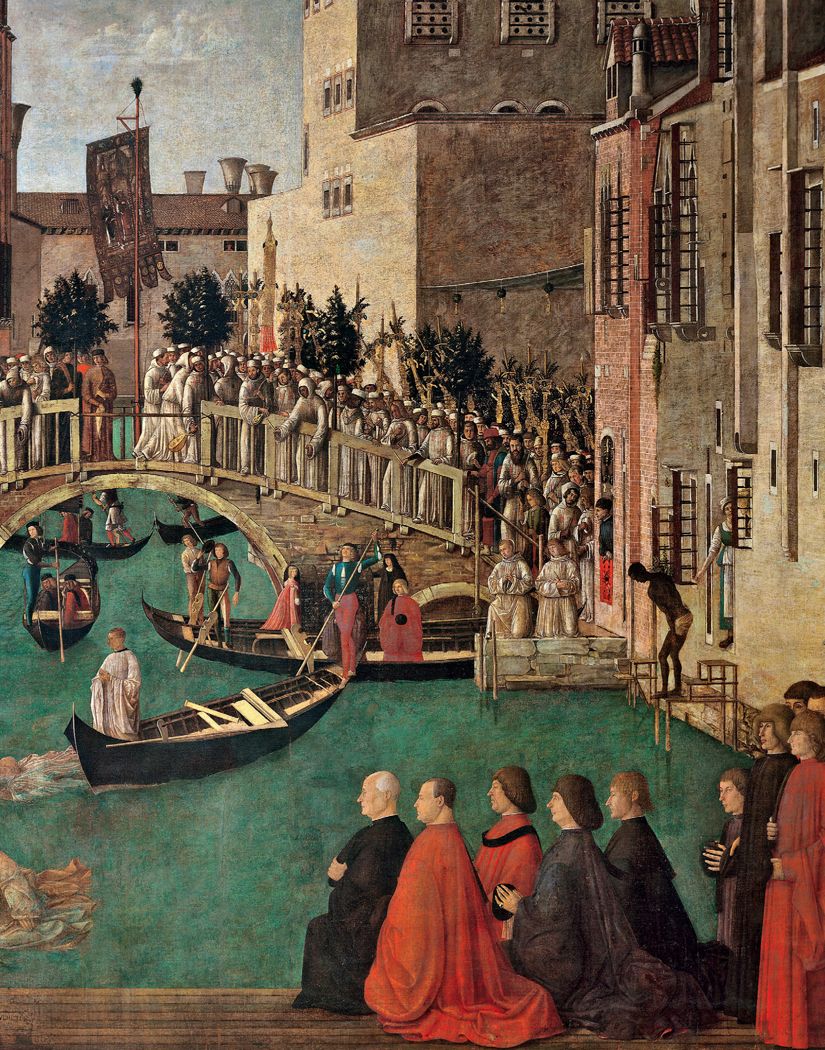

The Gondola as a Paradox
The stunned response of many people who come to Venice for the first time is to gasp in amazement at the glory of what they see. Magnificent buildings line up in chronological disarray; neighborhoods are connected to one another only by bridges; the Basilica of San Marco appears drunk on domes and gold, and most streets seem undecided about where they are going.
A suitable response to the city would be to laugh in amazement at the things that, by rights, should not be. Those buildings jostling one another are built on mud and water, aren’t they? The historical and religious symbol of the city is a lion with wings, an aerodynamic and ornithological impossibility. Equally unlikely is the boat that is a palpable symbol of the city – the gondola – for it is, in open defiance of all shipbuilding logic, asymmetrical, longer on the right side. It is flat-bottomed and propelled by a standing man rowing from one side with a single oar. Further, in today’s speed-obsessed world, this boat lacks a motor, generally moves at the pace of a walking man, and is no longer subjected to frequent design alterations to increase its speed or maneuverability.
This hardly sounds like a combination that is going to meet with great success, yet Venice was, for centuries, the center of the Western World in terms of wealth, luxury, and military might. Those apparently floating buildings were, in reality, firmly based on wealth and political stability. The lion was no docile tabby: the armies of Venice stormed the walls of Byzantium and conquered an empire, then sacked it and brought the booty home, where the gondola moved people and goods through the city quickly and easily. All three might have looked strange, but by heaven, they achieved all of this.
Once the most important city in the West, Venice is today a tiny provincial town of fewer than 60,000 residents. It can, however, be argued that it is the most beautiful city in the world as well as the best known. It’s been there more than a thousand years. The buildings have been redesigned, stripped bare, reconstructed, flooded and burned. History has clipped the lion’s wings as the city fell victim to the invading armies of the French, the Austrians, the Germans, and now the tourists. The gondola, too, has undergone countless changes in the centuries that gondolieri have been rowing it silently through the canals; the prow has gained height, and the boat has been made flatter and wider, then changed shape to its modern appearance. It was stripped bare of decoration and forced by law to be black. Yet it remains as unmistakable a symbol of a city as the Parthenon, the Coliseum, the World Trade Center. Those others are in ruins, or gone, but the gondola is still going about its quiet business of taking people from one place in the city to another. Ten centuries have passed, and it’s still made by specialist artisans of the same types of wood; prow and stern are still protected by ornamented metal strips; and its gondoliere still moves it at an amble through the waterways of Venice.
Much about the city can be learned by a close look at the gondola, its construction and history, its place in the culture, the fascination with which it is viewed by Venetians and non-Venetians alike. La gondola is the longest-lived female in the city and the most fascinating. Like the pasts of many beautiful women, hers is clothed in mystery, and the stories told about her often conflict with one another. Her appearance has changed over the years; many men have adored her: Goethe, Rousseau, Chateaubriand. Though not a widow, she always wears black. Though of uncertain origins her true name can be pronounced only in Veneziano. “Gondola,” when pronounced in Italian, sounds almost right, but not quite, for there should be no “l” in her name when it is said in her native dialect. Thus, no matter how often – like her home city – she is at the service of foreigners, she is destined to remain forever and completely Venexiana, as are the barcarole that accompany this book.
By taking a look at the gondola and the vital role she played in the founding of Venice, and hearing the music performed on her deck, one can perhaps enter into the life of the city in a new way: from the water, from the back doors, that part of the city familiar to those who know and love her best. It’s a different point of view and, unlike much of the city today, entirely Venetian.